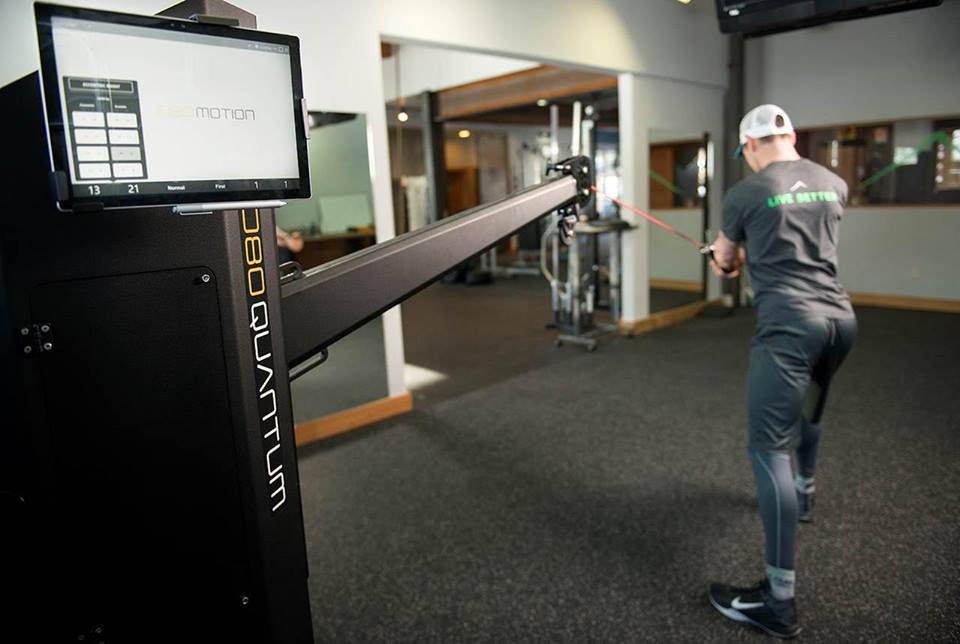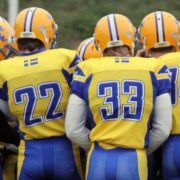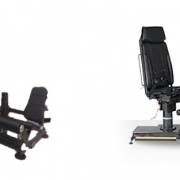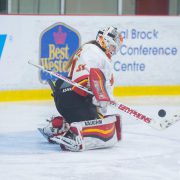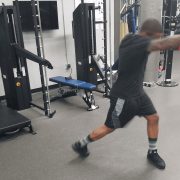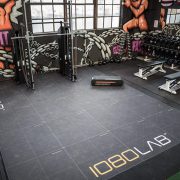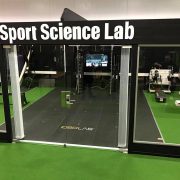Sports science marches steadily towards increasing individualization and responsive, data-driven decision-making. Meanwhile, key milestones in the return-to-play process remain rigidly formulaic. Time – not function – is still the major consideration for medical approval to return to play.
Chris Stackpole joined the New Jersey Devils as Head Physical Therapist / Sports Science Coordinator last summer. Having served as director of player health and performance at the Portland Trail Blazers from 2013-17, Stackpole comes to the Devils with considerable experience in injury prevention and rehabilitation. Stackpole looks to create the optimal plan for player performance and recovery with some of the NHL’s elite athletes, drawing on his education, experience and work with the sports science and technology industries.
When he was with the Trail Blazers, Chris Stackpole looked for ways he could quantify an athlete’s progression from injury. He knew the medical protocols would account for passive range of motion, basic movement tasks and the all-important timeline test.
But Stackpole wanted to give the Trail Blazers a more diligent report. He believed he could demonstrate how an athlete recovered symmetrical force expression between the affected and unaffected sides. For the cases in which he had reliable pre-injury data, he wanted to prove the players were returning to play stronger than they were before injury. And most of all, he was confident he could quantitatively argue the athlete was ready to play ahead of the conventional schedule.
“Coaches want their players ready and available. How you do that does not matter so much,” Stackpole says. “But coaches are also answering to general managers and owners. If strength & conditioning coaches have to provide information, they need concrete information to prove the players are improving and being managed properly.”
Stackpole introduced the 1080 Quantum to the Trail Blazers while rehabbing an athlete following shoulder surgery. They developed a multi-directional program of horizontal and vertical pushing and horizontal pulling (the player was too tall for vertical pulling). They tested the pushing and pulling at a constant speed of 0.2 m/s, monitoring range of motion and force production at this speed. Consistent isokinetic training provided specific details on impairments during the movements and across the rehab process.
As the athlete progressed through his rehabilitation, the player health and performance team could show his approach to symmetrical force expression. Most importantly, they had objective data showing a return to symmetry a few weeks prior to the anticipated medical clearance.
“You’re not going to win arguments with anecdotal data nowadays. The tech we use may not matter to the coaching staff, but coaches need information to back up their decisions. The staff will all move in the right direction guided by information.”
The shoulder injury was the first case the Trail Blazers worked on the 1080 Quantum. Stackpole and his team used a foot injury as a jumping off point for sport-specific movement training for pre-hab and performance.
They started the player on split squats with an elevated rear foot – a pure sagittal plane movement – to work on tension and force development. They progressed to lateral split squats and a lunge progression, connecting the 1080 Quantum cable to a belt on the player’s waist. Once he built up his speed and lateral abilities, they advanced to quicker pushes with the 1080 Quantum providing an eccentric overload on the return. “We wanted the player to learn to accept the load, not just give it.”
This is an important component in Stackpole’s approach to basketball conditioning.
“Most athletes in basketball do not learn the proper mechanics of side-to-side maneuvers and how to slide across the court. They tend to pull themselves, which takes them out of their base of support, rather than pushing themselves from the base.
“We want them to learn how to use the hip and torso complex more naturally and more reactively. The 1080 Quantum gave them force to accept and then push away from, and we rigged the environment to cue them to move in the proper way. We had a bunch of mirrors for visual feedback of what the legs should look like during pushing, and showed them to recognize the different cues.”
Stackpole has time to compile his data and marshal his arguments before making his case to the coach and management team. When working with the players, though, he needs instant feedback.
“The players eat it up. They were constantly checking the screen to see how much progress they were making, and they would get frustrated if they ever saw a plateau.
“We live in an Instagram and Twitter generation, where not quick enough is not good enough. We need something all the time. The information does not need to be in-depth or intense, it just needs to give an overview so athletes understand what they are seeing and instantly know if they are doing better, worse or the same.”
Stackpole is now the head physical therapist and sports science coordinator for the New Jersey Devils. The Boston University graduate grew up playing hockey and enjoyed basketball but had little experience with it before his clinical rotations. He interned with the Oklahoma City Thunder and worked in private practice before returning to basketball, and is now with his first professional hockey team.
“At the end of the day I just love pro sport. There’s a certain intensity pro athletes demand that is much different than clinical settings.
“I hear a lot of people say ‘I want to work in the NBA / NFL / NHL,’ but it’s a much different experience depending on what side of it you’re on. You better love that sport to give up every day of your life for it.”
